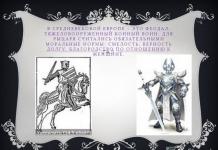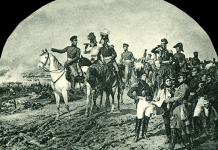Alexander Ivanovich Kuprin
Shulamith
Place me like a seal on your heart, like a seal on your arm: love is strong like death, jealousy is cruel like death: its arrows are arrows of fire.
Song of Songs
King Solomon had not yet reached middle age—forty-five years—and the fame of his wisdom and beauty, the splendor of his life and the splendor of his court had spread far beyond the borders of Palestine. In Assyria and Phenicia, in Upper and Lower Egypt, from ancient Tabriz to Yemen and from Ismar to Persepolis, on the Black Sea coast and on the Mediterranean islands, they pronounced his name with surprise, because there was no one like him among the kings in all his days.
In the year 480 after the departure of Israel, in the fourth year of his reign, in the month of Ziph, the king undertook the construction of the great temple of the Lord on Mount Moriah and the construction of a palace in Jerusalem. Eighty thousand stonemasons and seventy thousand porters worked continuously in the mountains and on the outskirts of the city, and ten thousand woodcutters out of thirty-eight thousand went in shifts to Lebanon, where they spent a whole month in such hard work that after it they rested for two months. Thousands of people tied felled trees into rafts, and hundreds of sailors floated them by sea to Jaffa, where they were trimmed by the Tyrians, skilled in turning and carpentry. Only during the construction of the pyramids of Khafre, Khufu and Mikerin in Gizeh was such a countless number of workers used.
Three thousand six hundred overseers supervised the work, and the overseers were commanded by Azariah, the son of Nathan, a cruel and active man, about whom there was a rumor that he never sleeps, devoured by the fire of the inner incurable disease. Nevertheless, the plans of the palace and temple, drawings of columns, the oracle and the copper sea, drawings of windows, decorations of walls and thrones were created by the architect Hiram-Abiy from Sidon, the son of a coppersmith from the Nafalim family.
Seven years later, in the month of Bule, the temple of the Lord was completed and thirteen years later - royal palace. For cedar logs from Lebanon, for cypress and olive boards, for pinewood, shittim and tarshish, for hewn and polished huge expensive stones, for purple, scarlet and fine linen embroidered with gold, for blue woolen fabrics, for ivory and red skins of rams, for iron, onyx and much marble, for precious stones, for gold chains, crowns, laces, tongs, nets, trays, lamps, flowers and lamps, gold hinges for doors and gold nails, weighing sixty shekels each , for gold-plated bowls and dishes, for carved and mosaic ornaments, images of lions, cherubs, oxen, palm trees and pineapples filled and carved in stone - Solomon gave the Tyrian king Hiram, the same name of the architect, twenty cities and villages in the land of Galilee, and Hiram found this an insignificant gift - with such unheard-of luxury the Temple of the Lord and the palace of Solomon and the small palace in Millo were built for the king’s wife, the beautiful Astiz, the daughter of the Egyptian pharaoh Sussakim. The mahogany tree, which later was used for railings and staircases of galleries, musical instruments and for bindings for sacred books, it was brought as a gift to Solomon by the Queen of Sheba, the wise and beautiful Balkis, along with such a quantity of fragrant incense, fragrant oils and precious perfumes that had never yet been seen in Israel.
The king's wealth grew every year. Three times a year his ships returned to the harbor: the Tarshish, sailing in the Mediterranean Sea, and the Hiram, sailing in the Black Sea. They brought ivory, monkeys, peacocks and antelopes from Africa; richly decorated chariots from Egypt, live tigers and lions, as well as animal skins and furs from Mesopotamia, snow-white horses from Kuva, Parvaim gold sand worth six hundred and sixty talents per year, red, black and sandalwood from the country of Ophir, colorful Assur and Kalakh carpets with amazing drawings - friendly gifts from King Tiglath-Pileazar, artistic mosaics from Nineveh, Nimrud and Sargon; wonderful patterned fabrics from Khatuar; gold-plated cups from Tyre; from Sidon - colored glass, and from Punt, near Bab-el-Mandeb, those rare incense - spikenard, aloes, cane, quinnamon, saffron, amber, musk, stacti, halvan, myrrh and frankincense, due to the possession of which egyptian pharaohs fought bloody wars more than once.
In the days of Solomon, silver became as valuable as a simple stone, and mahogany was not more expensive than the simple syquimores that grow in the lowlands.
The king built stone baths lined with porphyry, marble ponds and cool fountains, ordering water to be drawn from mountain springs that flowed into the Kidron stream, and around the palace he planted gardens and groves and planted a vineyard in Baal-Hamon.
Solomon had forty thousand stalls for mules and chariot horses, and twelve thousand for cavalry; barley and straw were brought daily from the provinces for the horses. Ten fattened oxen and twenty oxen from pasture, thirty chickens of wheat flour and sixty other things, one hundred baht of various wines, three hundred sheep, not counting fattened poultry, deer, chamois and saigas - all this through the hands of twelve guards went daily to Solomon’s table, and also to the table of his court, retinue and guard. Sixty warriors, from among the five hundred strongest and bravest in the entire army, kept guard in shifts in the inner chambers of the palace. Solomon ordered five hundred shields covered with gold plates to be made for his bodyguards.
Whatever the king’s eyes desired, he did not refuse them and did not forbid his heart any joy. The king had seven hundred wives and three hundred concubines, not counting slaves and dancers. And Solomon enchanted them all with his love, because God gave him such an inexhaustible power of passion that ordinary people did not have. He loved the white-faced, black-eyed, red-lipped Hittite women for their bright but instant beauty, which blooms just as early and charmingly and fades just as quickly, like a daffodil flower; dark, tall, fiery Philistine women with coarse curly hair, wearing golden ringing wristbands on their hands, gold hoops on their shoulders, and on both ankles wide bracelets connected by a thin chain; gentle, small, flexible Ammorite women, built without reproach - their loyalty and submission in love became a proverb; women from Assyria who lengthened their eyes with paint and etched blue stars on their foreheads and cheeks; educated, cheerful and witty daughters of Sidon, who knew how to sing, dance well, and also play harps, lutes and flutes to the accompaniment of a tambourine; yellow-skinned Egyptian women, tireless in love and crazy in jealousy; voluptuous Babylonian women, whose whole body under their clothes was smooth as marble, because they destroyed the hair on it with a special paste; the maidens of Bactria, who painted their hair and nails fiery red and wore shalwars; silent, shy Moabite women whose luxurious breasts were cool on the hottest summer nights; careless and wasteful Ammonite women with fiery hair and a body so white that it glowed in the darkness; fragile blue-eyed women with flaxen hair and a delicate scent of skin, who were brought from the north, through Baalbek, and whose language was incomprehensible to everyone living in Palestine. Moreover, the king loved many daughters of Judah and Israel.
He also shared a bed with Balkis-Makeda, the Queen of Sheba, who surpassed all women in the world in beauty, wisdom, wealth and variety of art in passion; and with Abishaga the Shunammite, who warmed the old age of King David, with this affectionate, quiet beauty, because of whom Solomon betrayed
Kuprin's story "Sulamith" is a story in twelve parts. About the great and just king of Persia Solomon and his love for the young girl Shulamith.
At the beginning, the author talks about the reign of Solomon, about his life. The forty-five-year-old king of Persia was unusually wise and handsome, generous and rich. Solomon had many women, only seven hundred wives in the harem. And also concubines, slaves, dancers. And King Solomon loved everyone, he had enough strength and passion for everyone. The wisest woman, the Queen of Sheba, did not escape his bed. But all this quantity and variety fed up Solomon.
One day he met a young thirteen-year-old Shulamith at the vineyard. And for the first time in my life I fell in love. I fell in love sincerely and tenderly, I fell in love as people love only once in a lifetime. Shulamith, inexperienced with either feelings or the attention of men, saw Solomon in front of her and was enchanted. And the first love happened in her life.
The King of Persia possessed such masculine beauty, such wisdom that not a single woman could resist him. Having agreed that Solomon would come to Shulamith at night, she spends the whole night in painful anticipation of her lover. In the morning she goes to the meeting place. And, having met his Solomon at the vineyard, he merges with him in a hot kiss. Solomon opens up to the girl and admits that he is the king of Persia. And seven days are measured for them for love. All these days they blissfully enjoy their rich feeling. But there is also the high priestess of the temple of Isis, Astiz. She is madly in love with Solomon. He was with her, and then he got fed up. But rejected women do not forgive insults. The chief of the king's guard becomes an instrument of her revenge. On the seventh night of love, Shulamith dies from the blade of Eliab.
Inconsolable Solomon sends Astiz outside Persia. And he indulges in longing for Shulamith long hours. There is no limit to the feeling of love. And he has no equal in strength.
Picture or drawing of Shulamith
Other retellings and reviews for the reader's diary
- Summary of The Tale of Frol Skobeev
The story of the story takes place in a small Novgorod district, where the needy nobleman Frol Skobeev lives. In the same district there is a patrimony of a steward. The daughter of this steward was the beautiful Annushka
- Summary of Shukshin Villagers
Malanya, a strict rural woman, having received a letter from her son, is going to go visit him in distant and unknown Moscow. The son and mother are separated by a huge distance. Malanya lives in a remote village in Siberia, so the son asks his mother to board a plane.
Place me like a seal on your heart, like a seal on your arm: love is strong like death, jealousy is cruel like death: its arrows are arrows of fire.
Song of Songs
I
King Solomon had not yet reached middle age—forty-five years—and the fame of his wisdom and beauty, the splendor of his life and the splendor of his court had spread far beyond the borders of Palestine. In Assyria and Phenicia, in Upper and Lower Egypt, from ancient Tabriz to Yemen and from Ismar to Persepolis, on the Black Sea coast and on the Mediterranean islands, they pronounced his name with surprise, because there was no one like him among the kings in all his days. In 480, after the departure of Israel, in the fourth year of his reign, in the month of Ziph, the king undertook the construction of the great temple of the Lord on Mount Moriah and the construction of a palace in Jerusalem. Eighty thousand stonemasons and seventy thousand porters worked continuously in the mountains and on the outskirts of the city, and ten thousand woodcutters out of thirty-eight thousand went in shifts to Lebanon, where they spent a whole month in such hard work that after it they rested for two months. Thousands of people tied felled trees into rafts, and hundreds of sailors floated them by sea to Jaffa, where they were trimmed by the Tyrians, skilled in turning and carpentry. Only during the construction of the pyramids of Khafre, Khufu and Mikerin in Gizeh was such a countless number of workers used. Three thousand six hundred overseers supervised the work, and the overseers were commanded by Azariah, the son of Nathan, a cruel and active man, about whom there was a rumor that he never sleeps, devoured by the fire of an internal incurable illness. Nevertheless, the plans of the palace and temple, drawings of columns, the oracle and the copper sea, drawings of windows, decorations of walls and thrones were created by the architect Hiram-Abiy from Sidon, the son of a med-pik from the Nafalim family. Seven years later, in the month of Bule, the temple of the Lord was completed and thirteen years later the royal palace. For cedar logs from Lebanon, for cypress and olive boards, for pinewood, shittim and farsps, for hewn and polished huge expensive stones, for purple, scarlet and fine linen embroidered with gold, for blue woolen fabrics, for ivory and red ram skins. , for iron, onyx and much marble, for precious stones, for gold chains, crowns, cords, tongs, nets, trays, lamps, flowers and lamps, gold hinges for doors and gold nails weighing sixty shekels each, for gold-plated bowls and dishes, for carved and mosaic ornaments, images of lions, cherubs, oxen, palm trees and pineapples filled and carved in stone - Solomon gave the Tyrian king Hiram, the same name of the architect, twenty cities and villages in the land of Galilee, and Hiram found this gift insignificant - with such unheard-of luxury, the temple of the Lord and the palace of Solomon and the small palace in Millo were built for the king’s wife, the beautiful Astiz, the daughter of the Egyptian pharaoh Sussakim. Mahogany, which was later used for railings and staircases of galleries, for musical instruments and for bindings for sacred books, was brought as a gift to Solomon by the Queen of Sheba, the wise and beautiful Balkis, along with as many fragrant incense, fragrant oils and precious perfumes as have not yet been seen in Israel. The king's wealth grew every year. Three times a year his ships returned to the harbor: the Tarshish, which sailed in the Mediterranean Sea, and the Hiram, which sailed in the Red Sea. They brought ivory, monkeys, peacocks and antelopes from Africa; richly decorated chariots from Egypt, live tigers and lions, as well as animal skins and furs from Mesopotamia, snow-white horses from Kuva, Parvaim gold sand worth six hundred and sixty talents per year, red, black and sandalwood from the country of Ophir, colorful Assur and Kalakh carpets with amazing drawings - friendly gifts from King Tiglath-Pileazar, artistic mosaics from Nineveh, Nimrud and Sargon; wonderful patterned fabrics from Khatuar; gold-plated cups from Tyre; from Sidon - colored glass, and from Punt, near Bab-el-Mandeb, those rare incense - spikenard, aloes, cane, cinnamon, saffron, amber, musk, stacti, halvan, myrrh and frankincense, due to the possession of which the Egyptian pharaohs fought bloody wars more than once. In the days of Solomon, silver became as valuable as a simple stone, and mahogany was not more expensive than the simple syquimores that grow in the lowlands. The king built stone baths lined with porphyry, marble ponds and cool fountains, ordering water to be drawn from mountain springs that flowed into the Kidron stream, and around the palace he planted gardens and groves and planted a vineyard in Baal-Hamon. Solomon had forty thousand stalls for mules and chariot horses, and twelve thousand for cavalry; barley and straw were brought daily from the provinces for the horses. Ten fattened oxen and twenty oxen from pasture, thirty cows of wheat flour and sixty other things, one hundred baht of various wines, three hundred sheep, not counting fattened poultry, deer, chamois and saigas - all this through the hands of twelve guards went daily to Solomon’s table, and also to the table of his court, retinue and guard. Sixty warriors, from among the five hundred strongest and bravest in the entire army, kept guard in shifts in the inner chambers of the palace. Solomon ordered five hundred shields covered with gold plates to be made for his bodyguards.Quotes from the book Alexander Kuprin - Shulamith:
“Put me like a seal on your heart, like a ring on your hand, because love is strong as death, and jealousy is cruel like hell: its arrows are arrows of fire.”
“like a golden apple in a bowl of transparent sardonyx is like a word spoken skillfully”
“The word is a spark in the movement of the heart,” this is what the king said.”
“All is vanity of vanities and vexation of spirit,” says Ecclesiastes.
But then the king did not yet know that God would soon send him such tender and fiery, devoted and beautiful love, which alone is more valuable than wealth, glory and wisdom, which is more valuable than life itself, because it does not even value life and is not afraid of death.”
“Tell me, is it true that mandrake berries help in love?
No, Shulamith, only love helps in love.”

“But she herself arches her back onto Solomon’s chest. Her lips redden over her shining teeth, her eyelids tremble with painful desire. Solomon eagerly presses his lips to her inviting mouth. He feels the flame of her lips, and the slipperiness of her teeth, and the sweet wetness of her tongue, and he is all ablaze with such an unbearable desire that he has never known in his life.”
“The love of a poor girl from a vineyard and a great king will never pass or be forgotten, because love is strong as death, because every woman who loves is a queen, because love is beautiful!”
“There were bright, warm, moonlit nights - sweet nights of love! Shulamith lay naked on a bed of tiger skins, and the king, sitting on the floor at her feet, filled his emerald goblet with golden wine from Mareotis, and drank to the health of his beloved, rejoicing with all his heart, and he told her wise ancient strange tales. And Shulamith’s hand rested on his head, stroking his wavy black hair.”
“There are three things in the world that are incomprehensible to me, and the fourth I do not comprehend: the path of an eagle in the sky, a snake on a rock, a ship in the middle of the sea, and the path of a man to a woman’s heart. This is not my wisdom, Shulamith, these are the words of Agur, the son of Jacob, heard from him by his disciples.”
“Surrounded, illuminated by the silent light of the moon, they forgot about time, about place, and then the hours passed, and they were surprised to notice how the pink dawn peeked into the lattice windows of the peace.”
“Sulamith eagerly listened to him, and when he fell silent, then in the silence of the night their lips closed, their hands intertwined, their chests touched. And when morning came, and Sulamith’s body seemed foamy pink, and love weariness surrounded her beautiful eyes with blue shadows, she said with a gentle smile:
Refresh me with apples, strengthen me with wine, for I am faint from love.”

“Human life is short, but time is endless, and matter is immortal. A man dies and fattens the earth with the rotting of his body, the earth feeds the ear, the ear brings grain, the man eats bread and feeds his body with it. Darkness and darkness of centuries pass by, everything in the world repeats itself - people, animals, stones, plants repeat themselves. In the diverse cycle of time and matter, you and I repeat ourselves, my beloved. This is as true as the fact that if you and I fill a large bag to the top with sea gravel and throw into it just one precious sapphire, then, having pulled it out of the bag many times, sooner or later you will still extract the jewel. We will meet you, Shulamith, and we will not recognize each other, but with longing and delight our hearts will strive to meet each other, because we have already met with you, my meek, my beautiful Shulamith, but we do not remember this.”

A. Kuprin and L. Andreev turned to biblical stories almost simultaneously, at the beginning of the twentieth century. “Time of Troubles” in Russia, the granting of democratic freedoms to the Russian people, weakening positions Orthodox Church, the spread of the ideas of mysticism allowed these great writers to write non-trivial works of art on biblical and evangelical themes, to “remake” canonical stories, which at the end of the nineteenth century seemed impossible. A. Kuprin “only” completes the great biblical “Song of Songs”, L. Andreev rethinks the act of the greatest of the sinners, Judas, and encroaches on the ethical foundations of Orthodoxy.
The story “Sulamith” was first published in 1908 in the almanac “Earth”. Kuprin himself called it “... either a historical poem or a legend about the love of Solomon and Shulamith.” It is based on the biblical “Song of Songs,” which tells the story of the love of the great Israeli king Solomon, the wisest of men, and Shulamith, the daughter of Israel, a poor girl from the vineyard. The story of this love is included in the annals of the world love lyrics, is rightfully considered one of the most beautiful and significant love stories. Its plot is very simple: King Solomon, the wisest of men, fell in love with a young village girl from his vineyard in Baal-Hamon, where he loved to retire in hours of great reflection, the most beautiful of women, and then left her. Suffering Shulamith searches for her lover, suffers from jealousy and unrequited love, then the lovers are reunited, Solomon takes the girl to his palace. The story of Solomon and Shulamith remains incomplete, unsaid, easy, leaves a feeling of mystery, and suggests speculation. From the text of the “Song of Songs” it is not clear whether Shulamith remained the king’s beloved; her death, moreover, is not discussed.
The magnificence of the biblical text, the most ancient and famous story love, wonderful poetry, have enriched literature with eternal metaphors depicting female beauty: “How beautiful you are, my friend, how beautiful you are! Your eyes are doves! Your hair is like a flock of goats that runs down from the mountains of Gilead, your teeth are like a flock of shorn sheep that come out of a bathhouse. Your lips are like a scarlet thread, and your lips are sweet, like your whiskey pomegranate slices. Your neck is like the Tower of David, which everyone admires. Your two breasts are like two fawns, like twin gazelles that graze among the lilies. You are all beautiful, my friend, and there is no flaw in you.” The words of the “Song of Songs” reveal the full power of love and jealousy: “Put me as a seal on your heart, as a seal on your hand, for love is strong as death, and jealousy is fierce as hell! Her arrows are arrows of fire - the flame of the Lord! Many waters will not be able to extinguish love and rivers will not flood it." I. Kuprin, a great connoisseur and singer of love, author of “ Garnet bracelet" and "Olesya", could not help but be attracted by the beauty and power of this story. He had a difficult task ahead of him: to create a text that was not inferior in beauty to the biblical one. The story is written in thick, rich prose, colored with bright details and colors; in his text, Kuprin generously uses biblical verses, introducing them into the dialogues of Shulamith and Solomon, which significantly embellishes his work.
Making a story out of the poem, Kuprin had to change the plot, fill it with details, complicate it simple story, dramatize it, finish it. He does this by drawing on other books of the Bible, such as the Proverbs of Solomon, which allowed him to write down the image of the king. Kuprin does not deviate from biblical assessments in his description of the famous king, he clearly follows them, using the biblical text, and allows direct borrowings from the books of the Bible. He describes his wisdom, his wealth, God’s favor towards him: “Because you did not ask for a long life for yourself, did not ask for the souls of your enemies, did not ask for wealth for yourself, but asked for wisdom... I give you a wise and reasonable heart. So there was no one like you before you, and after you there will not arise one like you.” In addition, it uses rich historical material, which allowed him to describe Jerusalem, Solomon’s palace, temples, and other religious cults coexisting alongside the Jewish. It is known that he collected it for a long time and carefully.
The plot of “Song of Songs” turns out to be too simple for prose, so Kuprin decided to make the poem a love tragedy. To do this, he makes the story heavier and ends the action with death. main character and introduces into the plot a non-existent character, the Egyptian queen Astiz, a priestess of the goddess Isis, a voluptuous villainess who was madly in love with Solomon and poisoned Shulamith out of jealousy. Shulamith dies, leaving Solomon in great sadness. The result is a love tragedy based on a biblical story, unambiguous, complete, fully expressed, despite all the skill of Kuprin, significantly inferior to the original.
One can only guess what made Kuprin take up rewriting the Song of Songs. Perhaps it was the beauty of the latter that captivated the writer. Perhaps the desire to popularize the beautiful love story. Or maybe there is a desire to receive some authorial dividends by using such a well-known inimitable text, which allowed the author to decorate his own prose with unique passages from the Song of Songs. In any case, his work should be considered significant and beautiful.
Surprisingly, both the “left” and the “right” reacted sharply negatively to the story, which merely developed a well-known biblical story. Consistent Christians saw in Kuprin’s work excessive eroticism, attempts to “ground” theological symbols, according to which Solomon is the image of Divine wisdom, Shulamith is identical human nature, and their marriage means the unity of God and people. Liberals and socialists, on the contrary, reproached Kuprin for spreading orthodox Christian ideas. The story remained “in the second echelon” of Kuprin’s prose and is still not very popular. Afanasyeva Vera


Alexander Ivanovich Kuprin (1870-1938)
Shulamith (1908)
Place me like a seal on your heart, like a seal on your arm: love is strong like death, jealousy is cruel like death: its arrows are arrows of fire.
Song of Songs
King Solomon had not yet reached middle age - forty-five years - and the fame of his wisdom and beauty, the splendor of his life and the splendor of his court had spread far beyond the borders of Palestine. In Assyria and Phenicia, in Upper and Lower Egypt, from ancient Tabriz to Yemen and from Ismar to Persepolis, on the Black Sea coast and on the Mediterranean islands, they pronounced his name with surprise, because there was no one like him among the kings in all his days.
In 480, after the departure of Israel, in the fourth year of his reign, in the month of Ziph, the king undertook the construction of the great temple of the Lord on Mount Moriah and the construction of a palace in Jerusalem. Eighty thousand stonemasons and seventy thousand porters worked continuously in the mountains and on the outskirts of the city, and ten thousand woodcutters out of thirty-eight thousand went in shifts to Lebanon, where they spent a whole month in such hard work that after it they rested for two months. Thousands of people tied felled trees into rafts, and hundreds of sailors floated them by sea to Jaffa, where they were trimmed by the Tyrians, skilled in turning and carpentry. Only during the construction of the pyramids of Khafre, Khufu and Mikerin in Gizeh was such a countless number of workers used.
Three thousand six hundred overseers supervised the work, and the overseers were commanded by Azariah, the son of Nathan, a cruel and active man, about whom there was a rumor that he never sleeps, devoured by the fire of an internal incurable illness. Nevertheless, the plans of the palace and temple, drawings of columns, the oracle and the copper sea, drawings of windows, decorations of walls and thrones were created by the architect Hiram-Abiy from Sidon, the son of a med-pik from the Nafalim family.
Seven years later, in the month of Bule, the temple of the Lord was completed and thirteen years later the royal palace. For cedar logs from Lebanon, for cypress and olive boards, for pinewood, shittim and farsps, for hewn and polished huge expensive stones, for purple, scarlet and fine linen embroidered with gold, for blue woolen fabrics, for ivory and red ram skins. , for iron, onyx and much marble, for precious stones, for gold chains, crowns, cords, tongs, nets, trays, lamps, flowers and lamps, gold hinges for doors and gold nails weighing sixty shekels each, for gold-plated bowls and dishes, for carved and mosaic ornaments, images of lions, cherubs, oxen, palm trees and pineapples filled and carved in stone - Solomon gave the Tyrian king Hiram, the same name of the architect, twenty cities and villages in the land of Galilee, and Hiram found this gift insignificant - with such unheard-of luxury, the temple of the Lord and the palace of Solomon and the small palace in Millo were built for the king’s wife, the beautiful Astiz, the daughter of the Egyptian pharaoh Sussakim. Mahogany, which was later used for railings and staircases of galleries, for musical instruments and for bindings for sacred books, was brought as a gift to Solomon by the Queen of Sheba, the wise and beautiful Balkis, along with as many fragrant incense, fragrant oils and precious perfumes as have not yet been seen in Israel.
The king's wealth grew every year. Three times a year his ships returned to the harbor: the Tarshish, which sailed in the Mediterranean Sea, and the Hiram, which sailed in the Red Sea. They brought ivory, monkeys, peacocks and antelopes from Africa; richly decorated chariots from Egypt, live tigers and lions, as well as animal skins and furs from Mesopotamia, snow-white horses from Kuva, Parvaim gold sand worth six hundred and sixty talents per year, red, black and sandalwood from the country of Ophir, colorful Assur and Kalakh carpets with amazing drawings - friendly gifts from King Tiglath-Pileazar, artistic mosaics from Nineveh, Nimrud and Sargon; wonderful patterned fabrics from Khatuar; gold-plated cups from Tyre; from Sidon - colored glass, and from Punt, near Bab-el-Mandeb, those rare incense - spikenard, aloes, cane, cinnamon, saffron, amber, musk, stacti, halvan, myrrh and frankincense, due to the possession of which the Egyptian pharaohs fought bloody wars more than once.
In the days of Solomon, silver became as valuable as a simple stone, and mahogany was not more expensive than the simple syquimores that grow in the lowlands.
The king built stone baths lined with porphyry, marble ponds and cool fountains, ordering water to be drawn from mountain springs that flowed into the Kidron stream, and around the palace he planted gardens and groves and planted a vineyard in Baal-Hamon.
Solomon had forty thousand stalls for mules and chariot horses, and twelve thousand for cavalry; barley and straw were brought daily from the provinces for the horses. Ten fattened oxen and twenty oxen from pasture, thirty cows of wheat flour and sixty other things, one hundred baht of various wines, three hundred sheep, not counting fattened poultry, deer, chamois and saigas - all this through the hands of twelve guards went daily to Solomon’s table, and also to the table of his court, retinue and guard. Sixty warriors, from among the five hundred strongest and bravest in the entire army, kept guard in shifts in the inner chambers of the palace. Solomon ordered five hundred shields covered with gold plates to be made for his bodyguards.
Whatever the king’s eyes desired, he did not refuse them and did not forbid his heart any joy. The king had seven hundred wives and three hundred concubines, not counting slaves and dancers. And Solomon enchanted them all with his love, because God gave him such an inexhaustible power of passion that ordinary people did not have. He loved the white-faced, black-eyed, red-lipped Hittite women for their bright but instant beauty, which blooms just as early and charmingly and fades just as quickly, like a daffodil flower; dark, tall, fiery Philistine women with coarse curly hair, wearing golden ringing wristbands on their hands, gold hoops on their shoulders, and on both ankles wide bracelets connected by a thin chain; gentle, small, flexible Ammorite women, built without reproach - their loyalty and submission in love became a proverb; women from Assyria who lengthened their eyes with paint and etched blue stars on their foreheads and cheeks; educated, cheerful and witty daughters of Sidon, who knew how to sing, dance well, and also play harps, lutes and flutes to the accompaniment of a tambourine; yellow-skinned Egyptian women, tireless in love and crazy in jealousy; voluptuous Babylonian women, whose whole body under their clothes was smooth as marble, because they destroyed the hair on it with a special paste; the maidens of Bactria, who painted their hair and nails fiery red and wore shalwars; silent, shy Moabite women whose luxurious breasts were cool on the hottest summer nights; careless and wasteful Ammonite women with fiery hair and a body so white that it glowed in the darkness; fragile blue-eyed women with flaxen hair and a delicate scent of skin, who were brought from the north, through Baalbek, and whose language was incomprehensible to everyone living in Palestine. Moreover, the king loved many daughters of Judah and Israel.


























